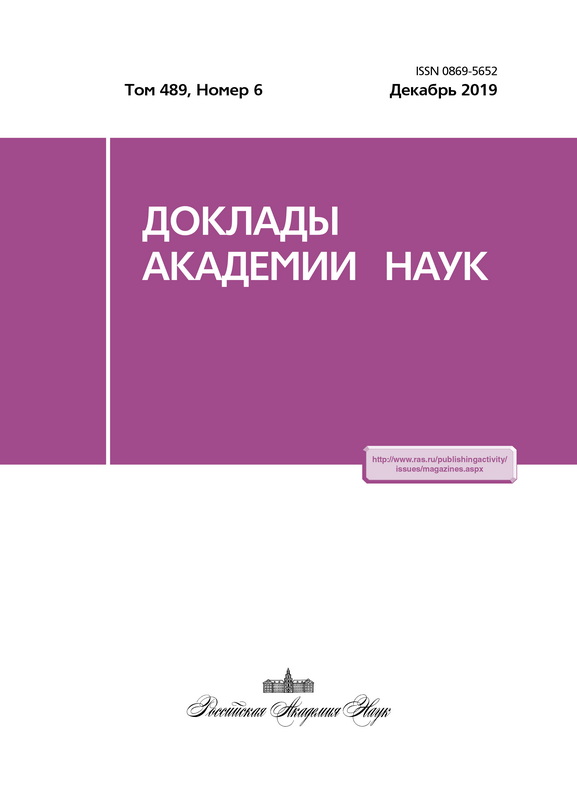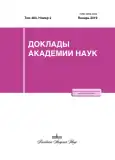Optimum trajectories for an Earth–asteroid–Earth mission with a high thrust flight
- Authors: Ivashkin V.V.1,2, Lang A.2,3
-
Affiliations:
- Institute for Applied Mathematics of the Russian Academy of Sciences
- Bauman Moscow State Technical University
- Xi’an Jiaotong University
- Issue: Vol 484, No 2 (2019)
- Pages: 161-166
- Section: Mechanics
- URL: https://journals.eco-vector.com/0869-5652/article/view/11719
- DOI: https://doi.org/10.31857/S0869-56524842161-166
- ID: 11719
Cite item
Abstract
The trajectories of a mission to an asteroid with the presence of a spacecraft (SC) near the asteroid for some time and including a return to the Earth have been studied. A two-stage method of constructing optimum (with respect to the maximum of the useful SC mass) interplanetary trajectories of an Earth–asteroid–Earth mission with high thrust engines has been developed: in the central Newtonian field of the Sun’s attraction at the first stage and with allowance for disturbances at the second stage. An algorithm of constructing conjugate functions for the case of maximizing the useful mass has been designed. The optimum trajectories for the Earth-Apophis-Earth mission have been constructed and analyzed. The possibility in principle of organizing the Earth-Apophis-Earth space mission based on the "Soyuz" and "Zenit" launch vehicles and "Fregat" upper stage for a flight has been demonstrated.
Full Text
About the authors
V. V. Ivashkin
Institute for Applied Mathematics of the Russian Academy of Sciences; Bauman Moscow State Technical University
Author for correspondence.
Email: ivashkin@keldysh.ru
Russian Federation
Anqi Lang
Bauman Moscow State Technical University; Xi’an Jiaotong University
Email: ivashkin@keldysh.ru
Russian Federation, Moscow; China
References
- Циолковский К.Э. Исследование мировых пространств реактивными приборами [1911–1912 гг.] Пионеры ракетной техники. Кибальчич. Циолковский. Цандер. Кондратюк. Избранные труды. М.: Наука, 1964.
- Sandford S. A. The Power of Sample Return Missions-Stardust and Hayabusa [J] // Proc. Intern. Astron. Union. 2011. V. 7(S280). P. 275–287.
- Ajluni T., Everett D., Linn T., et al. OSIRIS-REx, Returning the Asteroid Sample [C] // Aerospace Conf. IEEE. 2015. P. 1–15.
- Автоматические космические аппараты для фундаментальных и прикладных научных исследований / Под. ред. Г.М. Полищука, К.М. Пичхадзе М.: Изд-во МАИ-ПРИНТ, 2010. 660 c.
- Ивашкин В.В., Лан А. Анализ орбитального движения космического аппарата вокруг астероида Апофис // ДАН. 2016. T. 468. № 4. C. 403–407.
- Ивашкин В.В., Лан А. Анализ орбитального движения спутника астероида Апофис // Косм. исслед. 2017. Т. 55. № 4. С. 268–277.
- Hohmann W. Die Erreichbarkeit der Himmelskörper. München; B.: Druck und Verlag R. Oldenbourg, 1926. 88 p.
- Ильин В.А., Кузмак Г.Е. Оптимальные перелеты космических аппаратов с двигателями большой тяги. М.: Наука, 1976. 744 с.
- Соболь И.М., Статинков Р.Б. Выбор оптимальных параметров в задачах со многими критериями. М.: Наука, 1981. 110 с.
- Панченко Т.В. Генетические алгоритмы: учебно-методическое пособие. Астрахань: Издат. дом “Астрахан. ун-т”, 2007. 87 с.
- Nocedal J.; Wright S. J. Numerical Optimization. 2nd ed. N.Y.: Springer, 2006. ISBN 978-0-387-30303-1.
- Ивашкин В.В., Лан А. Анализ оптимальности траекторий экспедиции Земля–астероид–Земля. Препр. ИПМ им. М.В. Келдыша. M., 2017. № 113. 25 с. doi: 10.20948/prepr 2017-113.
- Аббасов М.Э. Методы оптимизации: Учеб. пособие. СПб.: Изд-во “ВВМ”, 2014. 64 с.
Supplementary files












